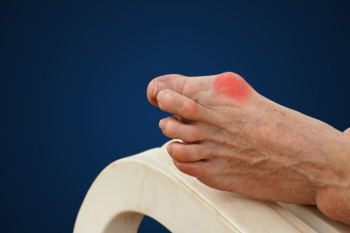
Bunions are bony bumps that form at the base of the big toe causing it to lean toward the other toes. They often look unsightly and can be painful, especially when wearing tight or narrow shoes. Bunions develop over time due to factors like genetics, foot structure, arthritis, or wearing ill-fitting footwear. While some people experience no pain, others may suffer from redness, swelling, and discomfort, particularly after prolonged walking or standing. Bunions are more common in women, likely due to shoe choices, and in those with a family history of the condition. Unfortunately, bunions do not go away on their own. They may worsen without intervention. Treatment includes wearing wider shoes, using orthotics, or padding the bunion to reduce friction. For severe cases, surgery may be necessary. If you have a painful bunion, it is suggested that you visit a podiatrist who can assess your bunions and recommend the best treatment plan.
If you are suffering from bunion pain, contact Charles Perry, DPM of Ohio. Our doctor can provide the care you need to keep you pain-free and on your feet.
What Is a Bunion?
Bunions are painful bony bumps that usually develop on the inside of the foot at the joint of the big toe. As the deformity increases over time, it may become painful to walk and wear shoes. Women are more likely to exacerbate existing bunions since they often wear tight, narrow shoes that shift their toes together. Bunion pain can be relieved by wearing wider shoes with enough room for the toes.
Causes
- Genetics – some people inherit feet that are more prone to bunion development
- Inflammatory Conditions - rheumatoid arthritis and polio may cause bunion development
Symptoms
- Redness and inflammation
- Pain and tenderness
- Callus or corns on the bump
- Restricted motion in the big toe
In order to diagnose your bunion, your podiatrist may ask about your medical history, symptoms, and general health. Your doctor might also order an x-ray to take a closer look at your feet. Nonsurgical treatment options include orthotics, padding, icing, changes in footwear, and medication. If nonsurgical treatments don’t alleviate your bunion pain, surgery may be necessary.
If you have any questions, please feel free to contact our offices located in Cambridge and Zanesville, OH . We offer the newest diagnostic and treatment technologies for all your foot care needs.
